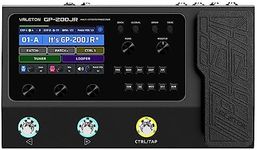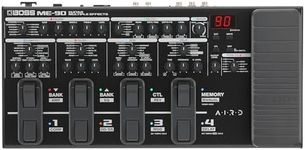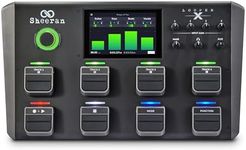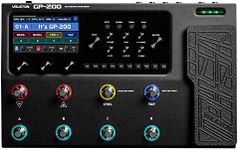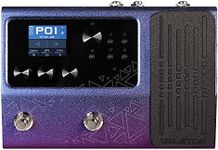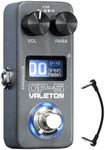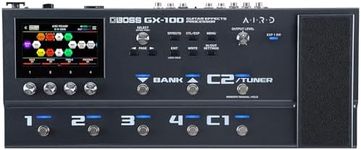Buying Guide for the Best Multi Effects Pedals
When choosing a multi-effects pedal, it's important to consider how it will fit into your musical style and setup. Multi-effects pedals offer a wide range of sounds and effects in a single unit, making them a versatile tool for guitarists and other musicians. The key is to find a pedal that offers the right combination of features, ease of use, and sound quality to suit your needs. Consider what types of effects you use most often, how you plan to integrate the pedal into your existing gear, and whether you need additional features like amp modeling or looping capabilities.Effects VarietyEffects variety refers to the range of different sounds and effects that a multi-effects pedal can produce. This is important because it determines how versatile the pedal will be in different musical contexts. Some pedals offer a wide array of effects, including distortions, delays, reverbs, modulations, and more, while others may focus on a specific type of effect. If you play a wide range of music styles, you might want a pedal with a broad selection of effects. However, if you have a specific sound in mind, a pedal that specializes in those effects might be more suitable.
User InterfaceThe user interface of a multi-effects pedal is how you interact with the device to select and adjust effects. This is important because a well-designed interface can make it easier to quickly access and tweak your sounds, especially in a live performance setting. Interfaces can range from simple knob-based controls to more complex digital displays with menus. If you prefer simplicity and ease of use, look for a pedal with straightforward controls. If you enjoy deep customization and don't mind a learning curve, a more complex interface might be appealing.
Sound QualitySound quality refers to how accurately and pleasingly the pedal reproduces the effects and tones. This is crucial because even the most feature-rich pedal won't be useful if it doesn't sound good. Sound quality can vary significantly between models, so it's important to listen to demos or try the pedal yourself if possible. Consider what level of sound fidelity you need; if you're recording or performing professionally, higher sound quality will be more important than if you're just practicing at home.
Connectivity OptionsConnectivity options refer to the various ways you can connect the pedal to other equipment, such as amplifiers, computers, or other pedals. This is important because it affects how you can integrate the pedal into your existing setup. Common connectivity options include input/output jacks, USB ports, and MIDI connections. If you plan to use the pedal in a complex setup or with recording software, look for one with the necessary connectivity options. If your setup is simpler, basic input and output jacks may suffice.
PortabilityPortability refers to how easy it is to transport and set up the pedal. This is important if you plan to use the pedal in different locations, such as gigs or rehearsals. Portability can be influenced by the pedal's size, weight, and power requirements. If you need to carry the pedal frequently, look for a compact and lightweight model. If the pedal will mostly stay in one place, portability might be less of a concern.
Additional FeaturesAdditional features can include things like built-in tuners, looper functions, or amp modeling. These features can add extra value and functionality to a multi-effects pedal. Consider what additional features might be useful for your playing style. For example, a built-in looper can be great for solo practice or performance, while amp modeling can be useful if you want to simulate different amplifier sounds without carrying multiple amps.
